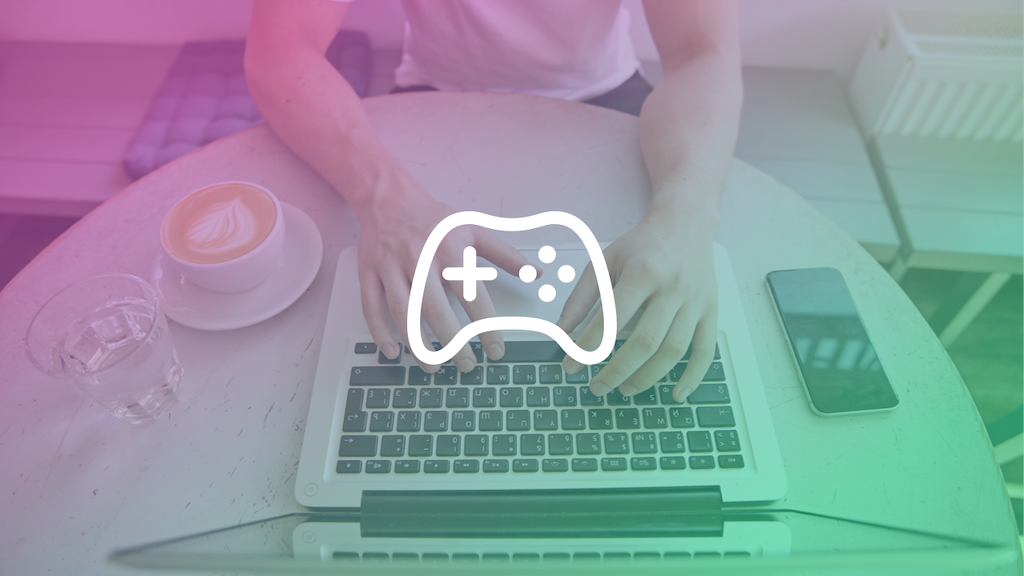Imagine if completing an employee training course was like playing a game of Super Mario. You’d be reaching your personal development goals in record time, unable to resist the lure of the instant feedback you’re rewarded with when you earn points or progress to the next level.
In essence, this is what gamification is all about. It’s the method of using gaming elements in your personal development plan to trigger people’s innate desire to achieve their goals and be rewarded instantly in the process.
Indeed, when staff are immersed in a training program that’s fun and engaging – thanks to the application of gamification techniques – it suddenly makes goal setting and personal growth a whole lot easier. Corporate training no longer feels like a chore; instead, it’s challenging, playful, and even social.
So how can your organisation get on board the gamification train?
Before we get into the details, let’s first understand what a personal development programme is, and why it’s important:
What’s a personal development programme?
A personal development programme – or plan – is unique for each and every employee, and should be based on their career goals and aspirations for growth. So whilst you may think that creating a personal development plan template will save time, in reality, it will be too generic and stifle your team’s ability to improve their skillset.
Personal development programmes usually include elements such as:
- Identifying any gaps in skills or knowledge
- Making a list of short and long term goals
- Understanding what needs to be achieved to meet those objectives
Team members can create their personal development plan independently or with the support of their line managers. Either way, management buy-in is essential, because the benefits of personal development go way beyond *just* improving your employees’ skills. For instance:
- Championing personal development can support your diversity and inclusion programme, because it gives current team members the opportunity to reskill and apply for internal promotion.
- Investing in staff development will make employees feel valued and that their contributions are important. This has a knock-on effect of improving motivation and productivity levels, which are vital to staff wellbeing and mental health.
- Cost-wise, investing in personal development makes more financial sense than recruiting new team members. One study reported that it costs on average six – nine months’ salary to replace an employee.
How to incorporate gamification into training
So how do you gamify personal development?
Today’s learning management system platforms are loaded with tools that enable you to introduce gamification in the workplace.
If you’re just starting out in your journey to gamify learning, begin by adding basic elements of gamification in your corporate training courses such as points, badges, and quizzes.
For instance, you can assign points to individual courses in your training programme, and as people complete each course they earn points and see a visual representation of their progress.
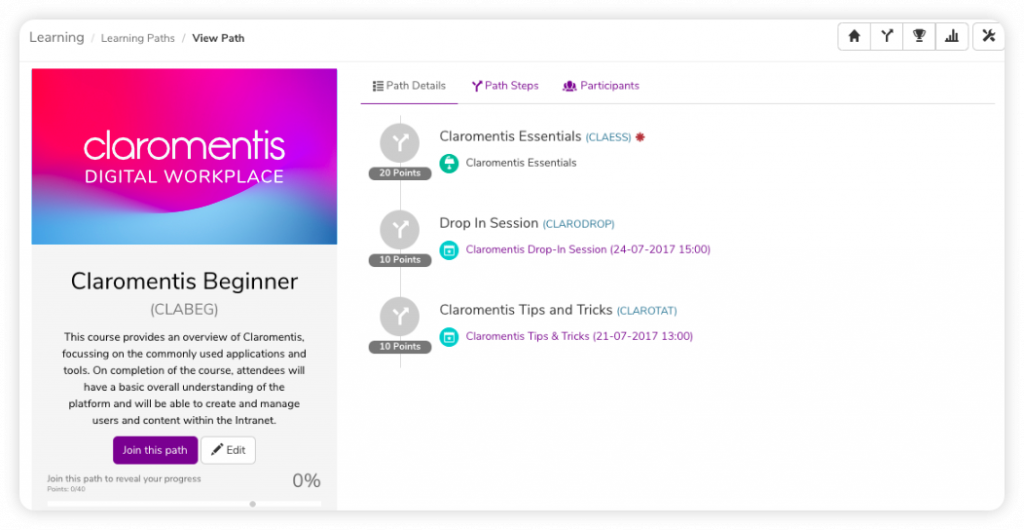
Next, consider using intranet badges to award those who achieved the most points. Digital rewards such as these act as great motivators, because they get automatically added to team members’ intranet profiles like a badge of honour – a common theme seen in video games.
What is the main benefit of gamification to training development?
By adding gamification techniques to your personal development programme, you’ll reap many benefits, such as:
- Increased employee engagement – by up to 60% according to a recent study.
- Elevated motivation levels, due to the increase in healthy competition between teams.
- Improved cross-departmental communication and collaboration via social learning features, like corporate social networking and internal messaging.
- Increased uptake of training courses thanks to a fun and engaging learning environment.
Gamification in learning and development – examples
So now we know what a personal development programme involves, and how to incorporate gamification elements into it. Let’s take a look at some examples of the two in action!
Instant feedback
Getting instant feedback when completing a training course or quiz is an important gamification element. The example below shows that when a team member gets full marks, they see a bright green “passed” visual as well as a fun and engaging “confetti” animation to celebrate their success.
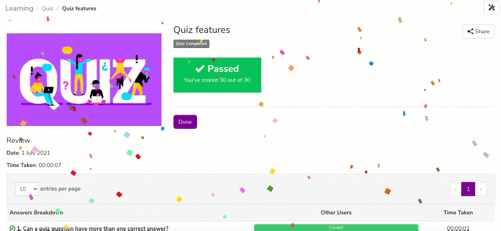
Digital rewards and badges
Below shows a prime example of gamification in the workplace – badges. These are digital rewards that you can award to your team members when they complete their training programme.
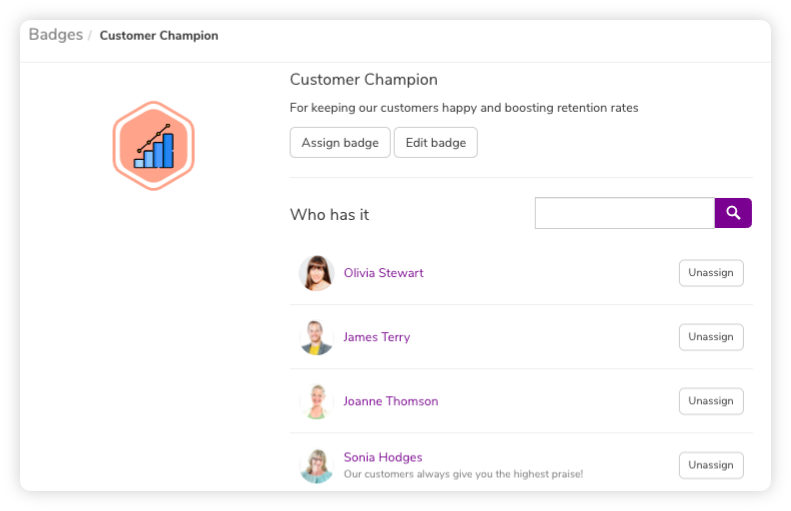
Whenever a member of staff wins a badge, they’re added to a dashboard that lists everyone else who owns one too – a gamification technique that can boost competition and motivation levels. Badges are also proudly displayed on people’s profiles like a digital trophy cabinet.
Personalised learning paths and training records
Learning and development programmes are unique to each employee, so personalisation should form part of your gamification strategy.
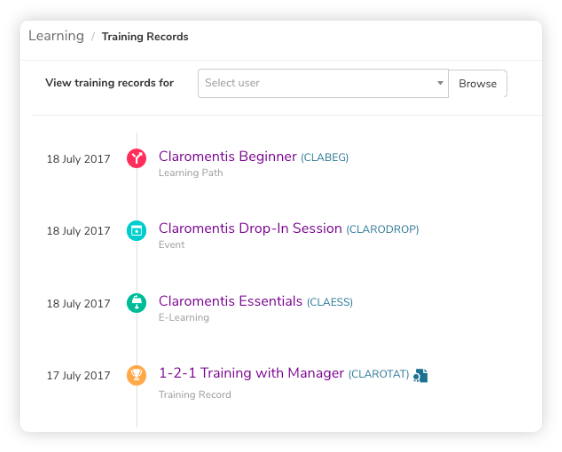
The above example shows a team member’s individual learning path and all the training records they’ve earned. In essence, this provides a historical timeline of their achievements, giving them a visual representation of their personal growth.
